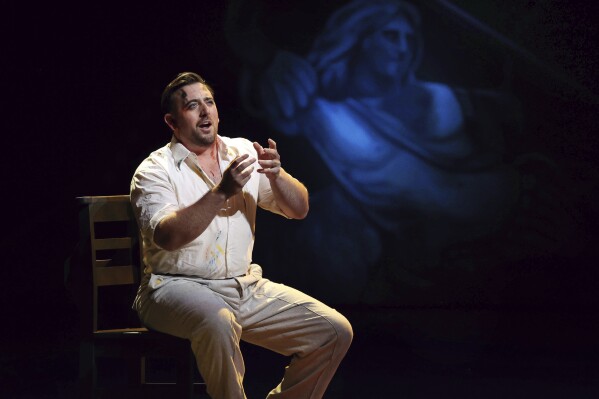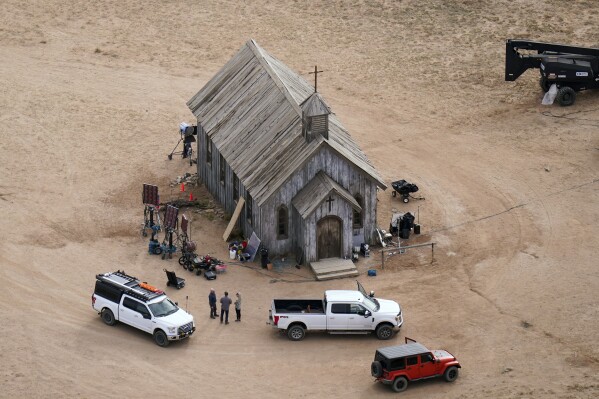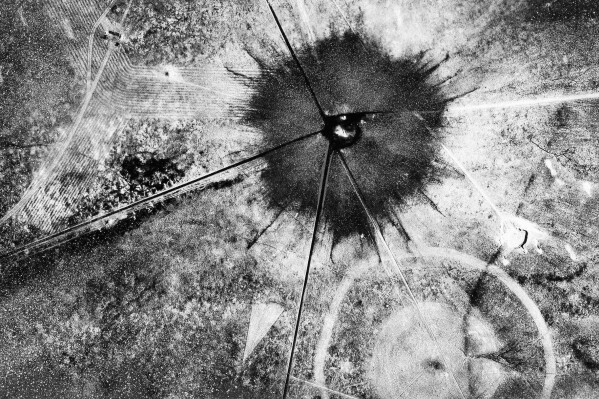Sabotage damages monument to frontiersman ‘Kit’ Carson, who led campaigns against Native Americans
SANTA FE, N.M. (AP) — Police in New Mexico’s capital city on Friday were investigating the partial destruction of a public monument to a 19th century frontiersman and U.S. soldier who had a leading role in the death of hundreds of Native Americans during the settlement of the American West.
The monument to Christopher “Kit” Carson has been encircled by a plywood barrier for its own protection since 2020, when Santa Fe was swept by the movement to remove depictions of historical figures who mistreated Native Americans amid a national reckoning over racial injustice.
The monument’s upper spire was toppled Thursday evening. Photos of the aftermath showed an abandoned pickup truck and cable that may have been used to inflict damage. Last year, the monument was splattered with red paint by activists on Indigenous Peoples’ Day.
Santa Fe Mayor Alan Webber issued a statement that described the latest damage as a “cowardly act.”
 Tenor Freddie De Tommaso, a young British sensation, makes US opera debut
Tenor Freddie De Tommaso, a young British sensation, makes US opera debut
 Movie weapons supervisor waives preliminary hearing in fatal shooting by Alec Baldwin
Movie weapons supervisor waives preliminary hearing in fatal shooting by Alec Baldwin
 US Senate votes to expand radiation-exposure compensation, from Guam to original A-bomb test site
US Senate votes to expand radiation-exposure compensation, from Guam to original A-bomb test site
“I want those who did this to be caught and held accountable,” the second-term Democratic mayor said. “There is no place for this kind of criminal conduct in our community. We should all condemn it.”
The U.S. attorney’s office confirmed federal jurisdiction over the monument outside a U.S. courthouse in downtown Santa Fe. The U.S. Marshals Service, which protects federal courts, could not immediately be reached.
Webber has attempted to diffuse the conflicts over several historical markers linked to Spanish colonialism and Anglo-American settlers, with mixed results. Last year, New Mexico’s governor voided pre-statehood orders that had targeting Native Americans, saying rescinding the territorial-era proclamations would help heal old wounds.
Activists in 2020 toppled a monument on Santa Fe’s central square to U.S. soldiers who fought not only for the Union in the Civil War but also in armed campaigns against Native Americans, described as “savage” in engraved letters that were chiseled from the landmark decades ago.
The city council in March abandoned a proposal to rebuild the plaza monument with new plaques amid a whirlwind of concerns.
Carson carried out military orders to force the surrender of the Navajo people by destroying crops, livestock and homes. Many Navajos died during a forced relocation known as the Long Walk, starting in 1863, and during a yearslong detention in eastern New Mexico.
The signing of the Navajo Treaty of 1868 signaled an end to the chapter, allowing the Navajos to return home to an area that has since become the United States’ largest Native American reservation by territory and population.
Carson’s life as a fur trapper, scout and courier was chronicled in dime novels and newspapers accounts that made him a legend in his own time. He was buried in Taos after his death in 1868.
Disclaimer: The copyright of this article belongs to the original author. Reposting this article is solely for the purpose of information dissemination and does not constitute any investment advice. If there is any infringement, please contact us immediately. We will make corrections or deletions as necessary. Thank you.



